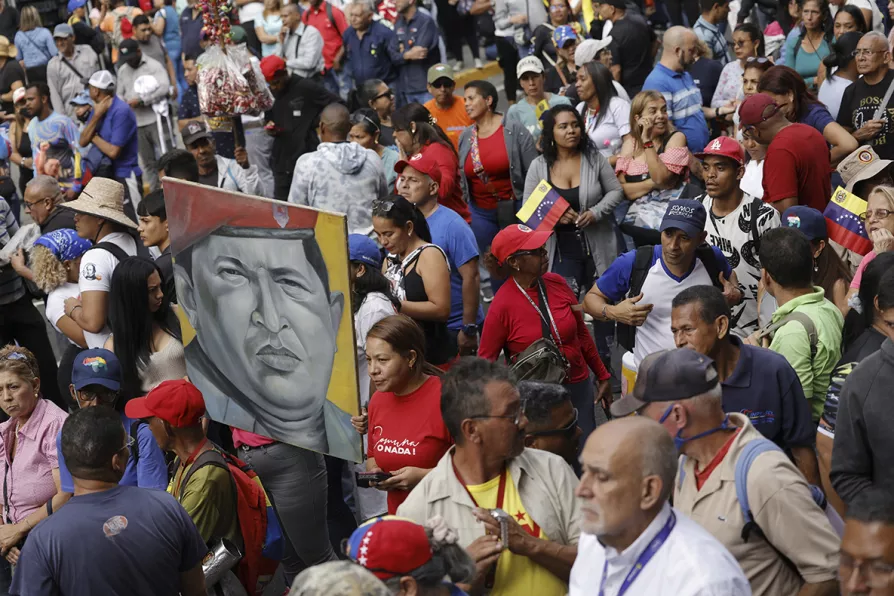Ten days after right-wing destabilisation attempts, Mexico’s leadership has emerged strengthened, securing historic labour and wage agreements, while opposition-backed protests have crumbled under scrutiny, says DAVID RABY

 Government supporters hold a painting depicting the late Venezuelan President Hugo Chavez, during an event marking the anniversary of the 1958 coup that overthrew dictator Marcos Perez Jimenez, in Caracas, Venezuela, January 23, 2024
Government supporters hold a painting depicting the late Venezuelan President Hugo Chavez, during an event marking the anniversary of the 1958 coup that overthrew dictator Marcos Perez Jimenez, in Caracas, Venezuela, January 23, 2024
A TERRITORIAL dispute between Venezuela and Guyana over the Essequibo region, a century old but recently resurrected, has just been jointly agreed to be settled peacefully and in accordance with international treaties.
The agreement was reached through a diplomatic initiative by Ralph Gonsalves, the Saint Vincent and the Grenadines PM and president of the Community of Latin American and Caribbean States (Celac), with the Caribbean Community (Caricom) and Brazil’s President Lula also being involved.
But both the United States and Britain seized on the opportunity afforded by the dispute to stoke up hostility towards Venezuela. The US Southern Command (USSouthCom), which has long been battle-ready to attack Venezuela if required, initiated “flight operations” within Guyana on December 7, in collaboration with the Guyana Defence Force (GDF).

To defend Puerto Rico’s right to peace is to defend Venezuela’s right to exist, argues MICHELLE ELLNER













